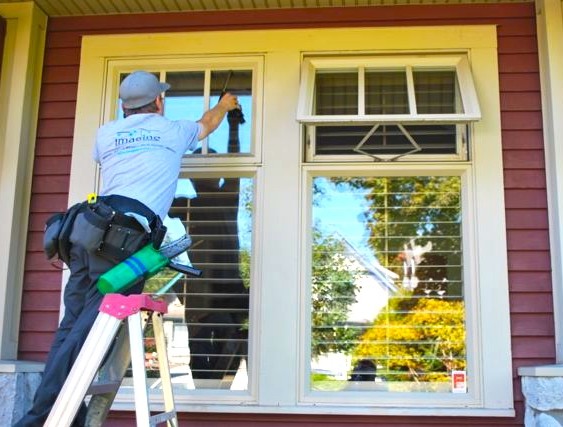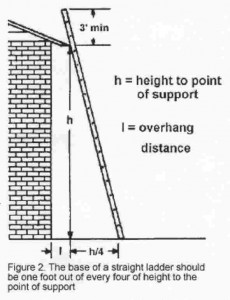 Ladders are portable hazards and knowing how to use them safely will give you the confidence to carry out many tasks around your home. Consider that falls from ladders are among the most common injury in any industry attributing to 1500 deaths annually, with over 100,000 people hurt enough to seek medical treatment. According to OSHA, the Occupational Health and Safety Administration, 66% of ladder injuries result from a lack of safety training.
Ladders are portable hazards and knowing how to use them safely will give you the confidence to carry out many tasks around your home. Consider that falls from ladders are among the most common injury in any industry attributing to 1500 deaths annually, with over 100,000 people hurt enough to seek medical treatment. According to OSHA, the Occupational Health and Safety Administration, 66% of ladder injuries result from a lack of safety training.
The first step in ladder safety is recognizing your comfort zone with working at heights and staying within those boundaries. Being more focused on how high you are from the ground than the task at hand is a sign to call someone more experienced.
The right ladder for the right job
Ladders come in a variety of types and sizes. Match the job you need to perform with the right ladder. Wood, aluminum, and fibreglass are the most common but opt for fibreglass if there is any chance you’ll be working near power lines. Never use a wooden ladder that has been painted as the paint can conceal flaws.
Stay off the top two rungs of a stepladder or the top three of an extension ladder. Extension ladders should extend 3 rungs past the point of contact if stepping off the ladder.
Setting up
 Check for hazards and make your work site safe. Stay clear of power lines, be aware of outward swinging doors, pedestrian or motor traffic. Level uneven or soft terrain by removing excess dirt. Adjustable leg levelling extensions are great for uneven terrain and allow a ladder to be set up safely on stairs. The ladder should have 4 points of contact; the two base beams and the two tip beams should be firmly in contact with the ground and the wall.
Check for hazards and make your work site safe. Stay clear of power lines, be aware of outward swinging doors, pedestrian or motor traffic. Level uneven or soft terrain by removing excess dirt. Adjustable leg levelling extensions are great for uneven terrain and allow a ladder to be set up safely on stairs. The ladder should have 4 points of contact; the two base beams and the two tip beams should be firmly in contact with the ground and the wall.
Set the right angle. Consider the physics of weight distribution, too close to the building and you could tip over, too far and the bottom could come out from under you. Follow the 4:1 ratio, for every 4 feet of height the base of the ladder should be 1 foot away from the wall.
For an extension ladder, ensure that all locks are secure and tie up the loose halyard to prevent a tripping hazard. On step ladders both beam spreaders should be fully extended. Consider tying off the top of the ladder to the structure or securing the base either by building an anchor or having a helper secure the ladder, especially in wet conditions. Wrapping the tip or contact point with cloth or foam will avoid scratching the contact surface.
Time to work
Always maintain 3 points of contact when climbing or working from a ladder. When ascending or descending with tools, keep your free hand in constant contact with the beam of the ladder. In other words, when climbing with tools never let go of the ladder. If something is too heavy or awkward to carry, use a rope to haul up your equipment.
Be aware that mud on your boots will create a slip hazard on the rungs, step slow and squarely on each rung. Be aware of the last rung, don’t misjudge and step off too soon, Over reaching is the fast track to a fall, it really doesn’t take much time to climb down and reposition your ladder.
Taking the time to familiarize yourself with basic ladder safety will help to ensure you work safe and avoid injury.
– See more at: https://imagineservices.ca/blog/laddersafety#sthash.KP9tzaKa.dpuf